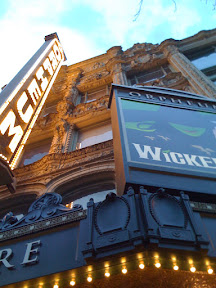There have been a few reports recently, like
this one in the New York Times, warning about the increasing share of family income required to put a student through college.
Last year, the net cost at a four-year public university amounted to 28 percent of the median family income, while a four-year private university cost 76 percent of the median family income.
That's scary. But besides increasing numbers of families unable to pay for higher education (or going into more debt to do so), I wonder whether we will see another short to medium-term recessionary effect on education--a shift in choice of studies, particularly at the undergraduate level.
When I was beginning college in 2003, the economy was pretty significantly different. It wasn't great (unemployment 6%, compared with today's 8%), but we hadn't just been hit with a financial crisis, and we weren't in a deep recession. I remember many conversations about the all-important
choice of major, most of which revolved around personal interests, professors, university-specific requirements, and of course, careers. At least back in freshmen year, however, the career portion of these conversations was only but a segment, and focused on the breadth of things one could go on to do after getting a degree in chemical engineering, psychology or public policy.
Today, at college campuses across the country, I'd imagine the conversation sounds a bit different. College freshmen--and even high school students--hear the stories from fellow-students approaching graduation and considering the options (work, travel, more school). Included in those are most definitely the subset of horror stories from students who are finding the job outlook shockingly more bleak than they had expected (even after widening their scope to less-relevant or less personally interesting fields). My personal experience tells me that these challenges travel quickly through the grapevine of friends, classes, and parental cautionary tails. Surely college frosh are listening; some of them must be asking themselves how attractive their intended major will really be. It's not a new question by any means, but perhaps the stakes have changed.
My guess is we'll see a trend in education, starting right now, towards departments with direct links to the industries that are still hiring the largest numbers. I'm not sure which majors will see the largest benefit (but I might guess computer science, economics, and biology/biochemistry--though med-school applications are way up too, and therefore even more competitive than usual) but you can bet the liberal arts aren't on the list.
So departments will shrink, funding will be redistributed. But the medium/long-term effect on the workforce? Perhaps less generalists and more unhappy students (compelled to study a field fit for a dreary job market, but not for them). The arts will suffer, that's clear, but I think there's more.
The kids who majored in Italian literature--these are the ones that chose their field because they were intrigued by it, not because it would land them a good salary once they tossed their caps. As a society, I want to believe we get something very important from encouraging those guys to study what they want.
Of course there are interest-motivated students outside of the liberal arts (I'd like to think I was one of them). But in fields with few post-graduation perks, I think you find a lot of very valuable minds, and I don't think I want those minds to be coerced into anything, let alone today's most marketable degree.
 My trip to San Diego included a lesson on how to fill, wrap and boil the delicious and culinarily intimidating pouches that are Chinese dumplings. Actually, it was my first time eating these outside of a Chinese restaurant, and both the making and the eating were extremely enjoyable.
My trip to San Diego included a lesson on how to fill, wrap and boil the delicious and culinarily intimidating pouches that are Chinese dumplings. Actually, it was my first time eating these outside of a Chinese restaurant, and both the making and the eating were extremely enjoyable.




 Last weekend I saw Wicked at the Orpheum, which was excellent and very cleverly written and acted. Especially exciting, though, was that we got L&M row orchestra seats (from which most of the stage was quite visible) for $25 as opposed to the typical $99 for weekend performances.
Last weekend I saw Wicked at the Orpheum, which was excellent and very cleverly written and acted. Especially exciting, though, was that we got L&M row orchestra seats (from which most of the stage was quite visible) for $25 as opposed to the typical $99 for weekend performances.

